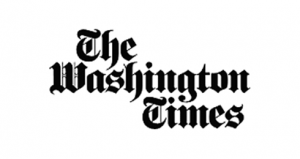
(This post originally appeared on The Washington Times)
Joe Biden’s $1.9 trillion stimulus plan — a spending blowout — has in it both good news and bad newsfor America’s small business owners.
For starters it’s … well … a spending blowout. And it comes at a time of unprecedented government deficits, a national and public debt that’s now 1.4 times our entire gross domestic product, and on the cusp of what most economists believe is the beginning of a very strong recovery, considering that vaccines are rolling out, construction, manufacturing and service indexes are strong, small business confidence remains at good levels and many consumers are itching to spend their pent up savings.
Small businesses can’t do a thing about these terrifying deficits, and even terrifying deficits are less terrifying in a low interest rate environment. But what if those same interest rates significantly rise in the future? It will mean austerity or default. It will mean severe budget cuts, reduced spending and crushingly higher taxes. Maybe that’s not a problem for small businesses today. But it could very well be a catastrophic problem in the not-so-distant future. Who knows for sure? No one knows for sure, and definitely not the economists or the politicians making these decisions. I’m sure.
So deficits could be a problem later, but here’s a problem that the stimulus plan is creating right now: much higher compensation costs.
Let’s start with the national $15 per hour minimum wage. Over the past three decades’ numerous studies have been performed by academics and universities to affirm whether a higher minimum wage helps or hurts employment and guess what? Like deficits, no one seems to know for sure either. All of these studies seem to conflict with each other.
Meanwhile, in the trenches, anyone running a small business knows that higher minimum wages means higher operating costs. And anyone running a small business in — say — Birmingham, Alabama, will find those costs to be more impactful than if that same business was located in — say — the Bay Area, California, where the cost of living is much higher. Minimum wages are best left to local decisions, not a national mandate. And let’s not forget that a higher minimum wage will push up all wages in a business wherever it’s located, because what experienced employee now only wants to be paid a few dollars above an entry level worker?
Two other things about Mr. Biden’s stimulus plan that will raise our costs and create headaches: extended unemployment and expanded paid leave. Mr. Biden’s plan wants to up the federal unemployment weekly check to $400 and extend these benefits through September 2021. He also wants employers to continue to pay for the time off their employees take. Gee, with all these great benefits, who needs to work anymore? True, there’s a tax credit for the paid leave but we have to wait a year until our returns are filed, so we won’t see that cash until 2022.
Across the board, my clients have complained of enticing workers back to their jobs when they can get paid an almost similar wage by staying home and watching Bridgerton (which by the way, is very over-rated). These benefits, along with a higher minimum wage, will serve to keep the unemployment rate higher and challenge small businesses to figure out other ways for getting work done like replacing their workers with technologies that use automation to run employee-less gross stores, and robots to replace pizza makers and assembly workers. Think that won’t happen? It already is and it’s only going to happen more.
But I won’t leave you without some good news about the plan.
And it’s this: if Congress is going to spend, it’s encouraging to see money spent on public health and state and local support. Some may argue that those dollars will go towards funding those governments’ deficits, which are largely made up of appallingly high pension and benefit liabilities for their unionized employees, both current and retired.
And although giving more money to teachers’ unions makes some of us choke, the fact is that getting them back in the classrooms means getting kids — our employees’ kids — back in the classroom and that helps us, because then our employees can finally get back to work and fully engage without worrying about their children’s educational failings from “virtual” learning because those same teachers feel their own personal health risks are inexplicably greater than food service, transport, health care and office workers. Whatever.
For a small business, the more money spent on health and safety will hopefully create a healthier and safer environment for them to operate their businesses and for their employees to get back to their jobs. While Mr. Biden’s promises of another round of small business funding remain vague in his stimulus plan, the intention to create a world where people are no longer terrified to leave their homes will allow us to shed our masks (probably in 2028 if it were up to some), fully re-open and create the only kind of stimulus really needed: more customers.
So that’s a good thing. A very good thing.

